Wooden cutting boards get dry and need to be oiled regularly. Some people recommend using mineral oil because, they say, other oils will turn rancid over time. But mineral oil is a petroleum by-product, which I find undesirable for a number of reasons. And in my many years of oiling my cutting boards with natural food oils (such as almond or avocado), I have never had the oil turn rancid.
Here’s how to refresh and maintain your wooden cutting boards with non-toxic materials.
What you’ll need
You’ll need
- Your wooden cutting board.
- A good-quality, mild cooking oil. I prefer Chosen Food’s avocado oil, but you can also use sweet almond oil or a similar light oil. Don’t use olive oil; it is too heavy and has too strong a smell.
- A beeswax-based furniture polish. (Here’s someone else’s recipe, though I recommend using a lighter oil, such as almond or avocado oil.)
- A clean cloth that you don’t mind getting oily.
- About a day’s worth of time (don’t worry, most of that time is spent waiting).
Oiling your board
- Coat your cutting board thoroughly on all sides with the oil. Rub it in well and make sure that no bare spots remain. You want a pretty substantial coating of oil—enough so your cutting board can absorb all that it needs. I use my bare hands and then rub the oil onto my hands, arms, and face—it’s good for my skin.
- Let the board sit a number of hours (overnight or up to 24 hours).
- When it looks like the board has absorbed as much oil as it can, wipe it down with the cloth.
- Apply the beeswax furniture polish. Rub it in well.
- Let the board sit again for one to two hours.
- Using the same cloth, wipe down the board.
That’s it!
Washing your board
When washing your board after using it, go ahead and use soap (or dish detergent) and hot water. Dry it immediately. If it starts to get a bit dry, apply a light coating of oil—no need to do the whole soaking/beeswax process until your board gets really dry. I usually do the long oil soak and beeswax process about every four months, but I use my cutting boards a LOT.
The process in photos
Click on each photo for a larger image. By the way, before you ask, I do not remember who created my cutting board. It was a gift. I consider it a work of art—when I first got it, I considered hanging it up on the wall. But a cutting board is made to be used, right? If you know who the artist is, or if you are the artist, please contact me and I will gladly credit the creator here.
This lovely cutting board isn’t in very bad shape, but it definitely needs oiling. Oil remoistens the internal fibers and helps your board last longer.
After oiling, it is very shiny.
As it sits, the cutting board absorbs oil–a lot of oil if it is very dry. Here, you see the board after resting for many hours. Because it isn’t quite as shiny, that means it has absorbed a fair amount of oil.
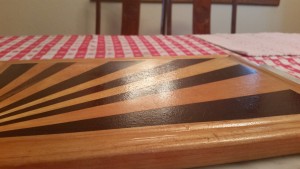
After resting, this board is much less shiny. It has absorbed a fair mount of oil, even though it didn’t look that dry at the start.
Even after being so thoroughly oiled, and sitting with the oil on it for hours, the cutting board can still have dry spots.
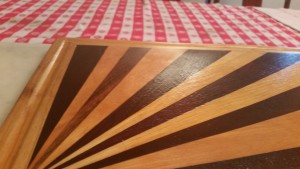
The board was particularly dry in one spot, so it absorbed more oil there (and now looks dryer in that spot). If you want, re-oil the board and let it sit some more.
Wipe the extra oil off and apply the beeswax polish. The board will absorb more oil from the beeswax polish, and the beeswax provides a mild seal that holds in the oil and repels water.
Let it sit for a few more hours, then wipe off the excess beeswax. Your board is now ready to use again. Note how the wood is darker and has a faint sheen.
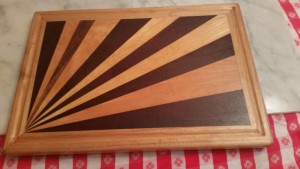
The oiled and beeswaxed board is ready to use. It will now be easier to wash–for many tasks, you might only need to rinse it off. Of course, after cutting meat, wash it thoroughly with soap and hot water.
For maintenance between oiling/polishing, apply a light amount of oil after you wash and dry your board.

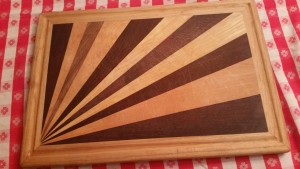
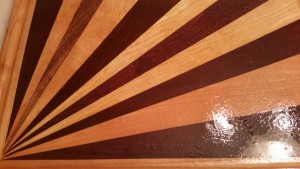



Petra Delprincipe says:
Thank you for sharing your excellent ideas. I have a internet site ” http://www.musicinstruments.tv ” which promotes and shares new talent and some pros with their videos. Check it out! I am usually browsing for new ideas.